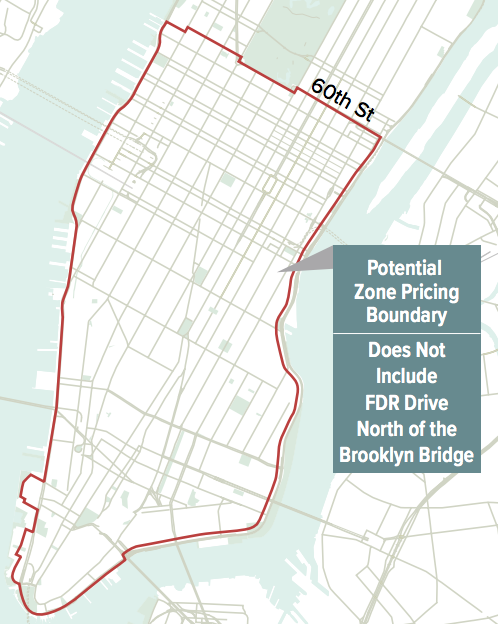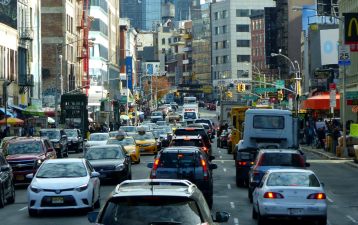Poll: City Support for Congestion Pricing Is Even Stronger Than Statewide

Congestion pricing supporters were pleased this week when a new poll showed that 52 percent of New York State residents support the tolling scheme when asked.
But the numbers in the Siena Research poll are even stronger within every borough of the city — despite opponents’ continued demagoguery that congestion pricing represents some sort of unfair tax on a middle class that simply must drive into Manhattan.
According to numbers that Siena crunched exclusively for Streetsblog, respondents in the four boroughs (minus Staten Island, for which there were insufficient respondents) support congestion pricing by even wider margins than respondents all over the state
Here are the numbers:
- Manhattan: 60.6 percent in favor, 32.5 percent opposed (pro-toll margin: 28.1 percent).
- Bronx: 58.7 percent in favor, 34.3 percent opposed (pro-toll margin: 24.4 percent).
- Queens: 54.8 percent in favor, 38.2 percent opposed (pro-toll margin: 16.6 percent).
- Brooklyn: 54.9 percent in favor, 39.9 percent opposed (pro-toll margin: 15 percent).
The numbers make it clear that borough residents are far ahead of some of their elected officials in Albany on the issue. This week, Streetsblog interviewed many legislators from the city and found a surprisingly high number of them on the fence — despite the good poll numbers.

“I have concerns,” Assembly Member Helene Weinstein of Brooklyn told Streetsblog. “Concerns for the people who drive.”
“I think it’s a tax on the lower middle class, yes,” she said. “When I went to college and I took economics, one of the things I remembered was that the tax should be based on the ability to pay. This is not. This is based on owning a car.”
Fact check: In Stavisky’s district, only 3.6 percent of commuters regularly drive into Manhattan — and the ones who do have median incomes 20.3 percent higher than the district-wide average, according to the Tri-State Transportation Campaign.
with Ben Verde and David Meyer
